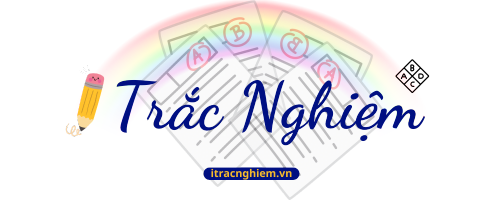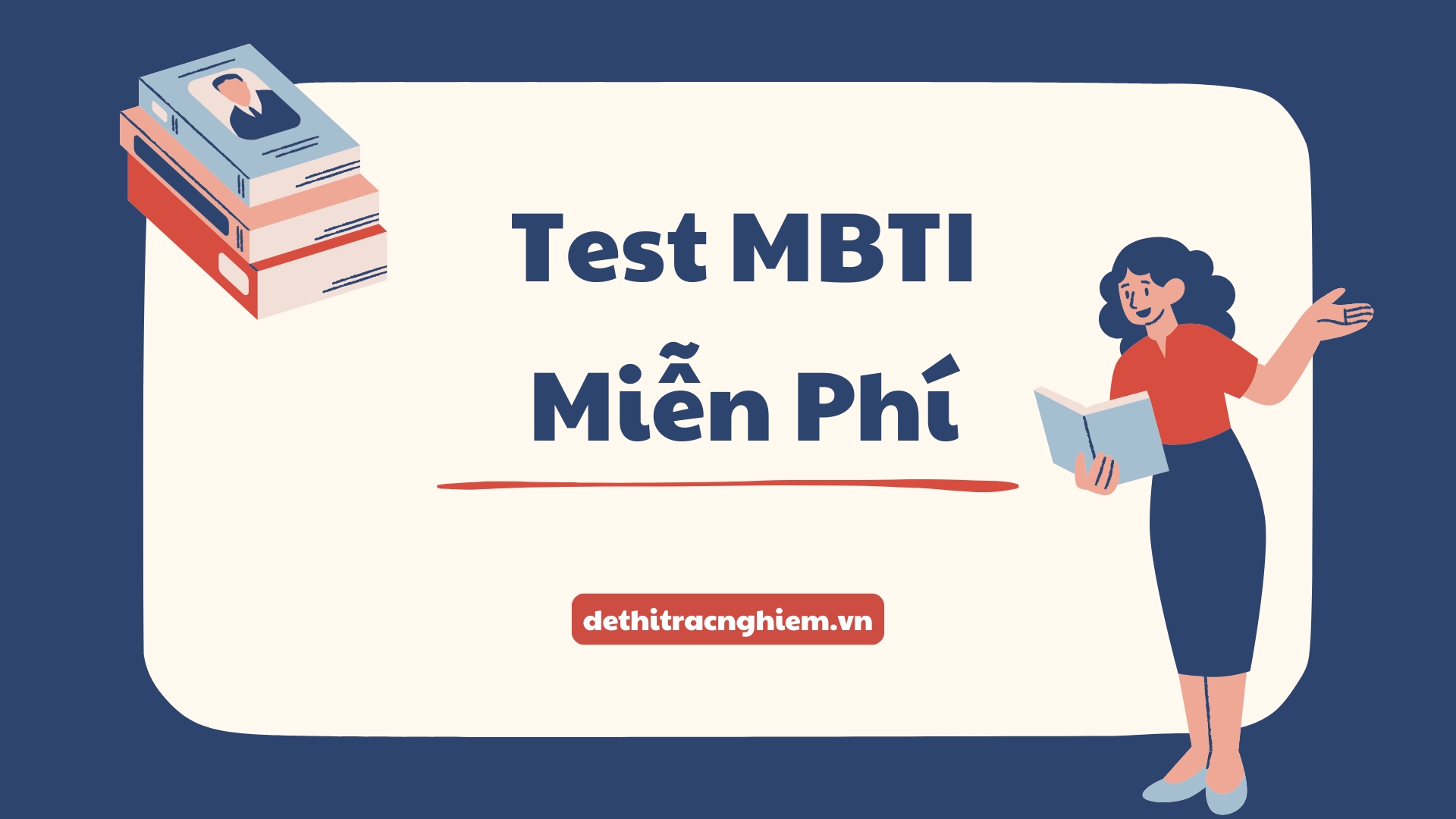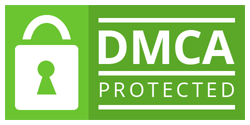Trắc nghiệm Tài chính Tiền tệ tiếng Anh là bộ câu hỏi kiểm tra kiến thức môn Financial and Monetary Theory, một học phần quan trọng trong chương trình đào tạo ngành Finance, Banking tại nhiều trường đại học như University of Economics – Ho Chi Minh City (UEH). Đây là đề ôn tập do ThS. Emily Nguyen – giảng viên Department of Finance biên soạn, giúp sinh viên củng cố vững vàng các kiến thức chuyên ngành bằng tiếng Anh, bao gồm: chức năng của money, money supply and demand, interest rates, central bank operations, banking system, và financial markets.
Trắc nghiệm Tài chính Tiền tệ trên dethitracnghiem.vn là một bộ đề đại học toàn diện, giúp sinh viên luyện tập kỹ năng làm bài thi trắc nghiệm chuyên ngành bằng tiếng Anh. Bộ đề bao gồm các câu hỏi dưới dạng multiple-choice được phân loại theo các chủ đề chính, kèm theo đáp án và giải thích chi tiết giúp người học hiểu sâu bản chất và thuật ngữ tài chính quốc tế. Với giao diện thân thiện, chức năng lưu đề và theo dõi tiến trình học qua biểu đồ, cùng khả năng luyện tập không giới hạn, sinh viên tự tin nâng cao năng lực chuyên môn và làm quen với cấu trúc đề thi tiếng Anh thực tế.
Hãy cùng Dethitracnghiem.vn khám phá nội dung này và bắt đầu làm kiểm tra ngay hôm nay!
Trắc nghiệm Tài chính Tiền tệ tiếng Anh
Câu 1: When you compare the prices of two different smartphones, money is performing its function as a:
A. Medium of exchange.
B. Store of value.
C. Unit of account.
D. Standard of deferred payment.
Câu 2: Fiat money has value primarily because:
A. It is backed by a physical commodity like gold.
B. Its intrinsic value is high.
C. It is declared legal tender by the government and is widely accepted.
D. It is rare and difficult to produce.
Câu 3: The primary economic function of the financial system is to:
A. Print money for the government.
B. Channel funds from households and firms with savings to those with a shortage of funds.
C. Set tax policies for the nation.
D. Ensure all businesses are profitable.
Câu 4: Which of the following is an example of direct finance?
A. You deposit money at a commercial bank.
B. You take out a car loan from a credit union.
C. A corporation issues new shares of stock to the public.
D. You purchase an insurance policy.
Câu 5: A financial market in which only short-term debt instruments are traded is called the:
A. Capital market.
B. Money market.
C. Stock market.
D. Bond market.
Câu 6: A corporation acquires new funds only when its securities are sold in the:
A. Secondary market by a securities dealer.
B. Primary market by an investment bank.
C. Exchange market.
D. Over-the-counter market.
Câu 7: The problem of adverse selection in financial markets occurs when:
A. The parties who are the most likely to produce an undesirable outcome are the ones most likely to seek out a loan.
B. A borrower engages in riskier activities after receiving a loan.
C. The lender cannot observe the borrower’s actions.
D. The market interest rate is too high.
Câu 8: Financial intermediaries exist, in part, because they:
A. Increase transaction costs for savers and borrowers.
B. Reduce transaction costs and solve problems arising from asymmetric information.
C. Are never subject to government regulation.
D. Increase the riskiness of the financial system.
Câu 9: The inverse relationship between the price of a bond and the market interest rate is a fundamental principle. When market interest rates rise, the price of an existing bond:
A. Falls.
B. Rises.
C. Remains unchanged.
D. Becomes equal to its face value.
Câu 10: The most important goal of a central bank is generally considered to be:
A. Maximizing its own profits.
B. Providing loans to the government.
C. Maintaining price stability.
D. Ensuring commercial banks are profitable.
Câu 11: The “lender of last resort” function of a central bank is to:
A. Provide loans to any business that is failing.
B. Provide liquidity to the banking system to prevent financial panics.
C. Lend money to the government when it has a budget deficit.
D. Be the last bank you can borrow from.
Câu 12: Which of the following is the most commonly used monetary policy tool?
A. The reserve requirement.
B. The discount rate.
C. Open market operations.
D. Credit controls.
Câu 13: To conduct an expansionary monetary policy, the central bank would:
A. Sell government securities on the open market.
B. Raise the reserve requirement.
C. Buy government securities on the open market.
D. Raise the discount rate.
Câu 14: The money multiplier will decrease if:
A. The required reserve ratio decreases.
B. The public decides to hold more currency relative to deposits.
C. Banks decide to hold fewer excess reserves.
D. The central bank buys bonds.
Câu 15: The Quantity Theory of Money states that the primary cause of inflation is:
A. A rise in the price of oil.
B. A rapid increase in the supply of money.
C. The activities of labor unions.
D. A deficit in the government’s budget.
Câu 16: The short-run Phillips curve illustrates:
A. A positive relationship between inflation and unemployment.
B. A negative (inverse) relationship between inflation and unemployment.
C. The relationship between the money supply and interest rates.
D. The relationship between economic growth and income inequality.
Câu 17: The theory of a vertical long-run Phillips curve implies that:
A. There is a permanent trade-off between inflation and unemployment.
B. In the long run, monetary policy cannot keep unemployment below its natural rate.
C. In the long run, both inflation and unemployment are zero.
D. In the long run, inflation is always stable.
Câu 18: The Fisher effect describes the relationship between:
A. Interest rates and investment.
B. Nominal interest rates, real interest rates, and expected inflation.
C. The money supply and GDP.
D. Exchange rates and trade balances.
Câu 19: The “Impossible Trinity” (or Trilemma) states that a country cannot simultaneously have:
A. Low inflation, low unemployment, and high growth.
B. A fixed exchange rate, free capital mobility, and an independent monetary policy.
C. A balanced budget, free trade, and high foreign reserves.
D. An efficient stock market, a stable banking system, and stable inflation.
Câu 20: When a country’s currency depreciates, it means:
A. Its exports become cheaper for foreigners, and its imports become more expensive for domestic residents.
B. Its exports become more expensive for foreigners, and its imports become cheaper for domestic residents.
C. Both its exports and imports become cheaper.
D. Both its exports and imports become more expensive.
Câu 21: Which of the following is a liability on a commercial bank’s balance sheet?
A. Loans to customers.
B. Government securities.
C. Checkable deposits.
D. Reserves held at the central bank.
Câu 22: The primary role of investment banks is to:
A. Accept deposits and make commercial loans.
B. Help corporations issue securities and advise on mergers and acquisitions.
C. Insure individuals against loss of life.
D. Regulate the stock market.
Câu 23: The concept of a “liquidity trap” describes a situation where:
A. Interest rates are very high, discouraging borrowing.
B. Interest rates are near zero, and expansionary monetary policy becomes ineffective.
C. Banks have no liquidity to lend.
D. The public hoards cash due to a fear of bank failures.
Câu 24: What is the primary difference between the M1 and M2 measures of the money supply?
A. M1 is a broader measure than M2.
B. M2 includes M1 plus savings deposits, small-denomination time deposits, and money market mutual fund shares.
C. M1 includes credit card balances, while M2 does not.
D. M2 includes stocks and bonds, while M1 does not.
Câu 25: The theory of Purchasing Power Parity (PPP) suggests that in the long run, exchange rates should adjust to:
A. Ensure the trade balance is always zero.
B. Equalize the price of an identical basket of goods and services across countries.
C. Make nominal interest rates equal across countries.
D. Keep the current account in surplus.
Câu 26: “Stagflation” is a term used to describe a period of:
A. High inflation and high economic growth.
B. Low inflation and high unemployment.
C. High inflation and high unemployment (economic stagnation).
D. Low inflation and low unemployment.
Câu 27: The problem of “moral hazard” arises in financial markets when:
A. A lender cannot distinguish between high-risk and low-risk borrowers.
B. After a transaction occurs, one party has an incentive to engage in activities that are undesirable from the other party’s point of view.
C. The market is not regulated.
D. Information is symmetric.
Câu 28: A country running a persistent current account surplus will likely experience:
A. A depreciation of its currency.
B. An appreciation of its currency.
C. A depletion of its foreign exchange reserves.
D. A rise in its government budget deficit.
Câu 29: Systemic risk in the financial sector refers to:
A. The risk of a single bank failing.
B. The risk that the failure of one financial institution can trigger a cascade of failures throughout the entire system.
C. The risk of a computer system failure.
D. The risk of changes in government regulations.
Câu 30: The monetary base (or high-powered money) consists of:
A. M1 plus M2.
B. All checkable deposits.
C. Currency in circulation plus the total reserves of the banking system.
D. The total assets of the central bank.




